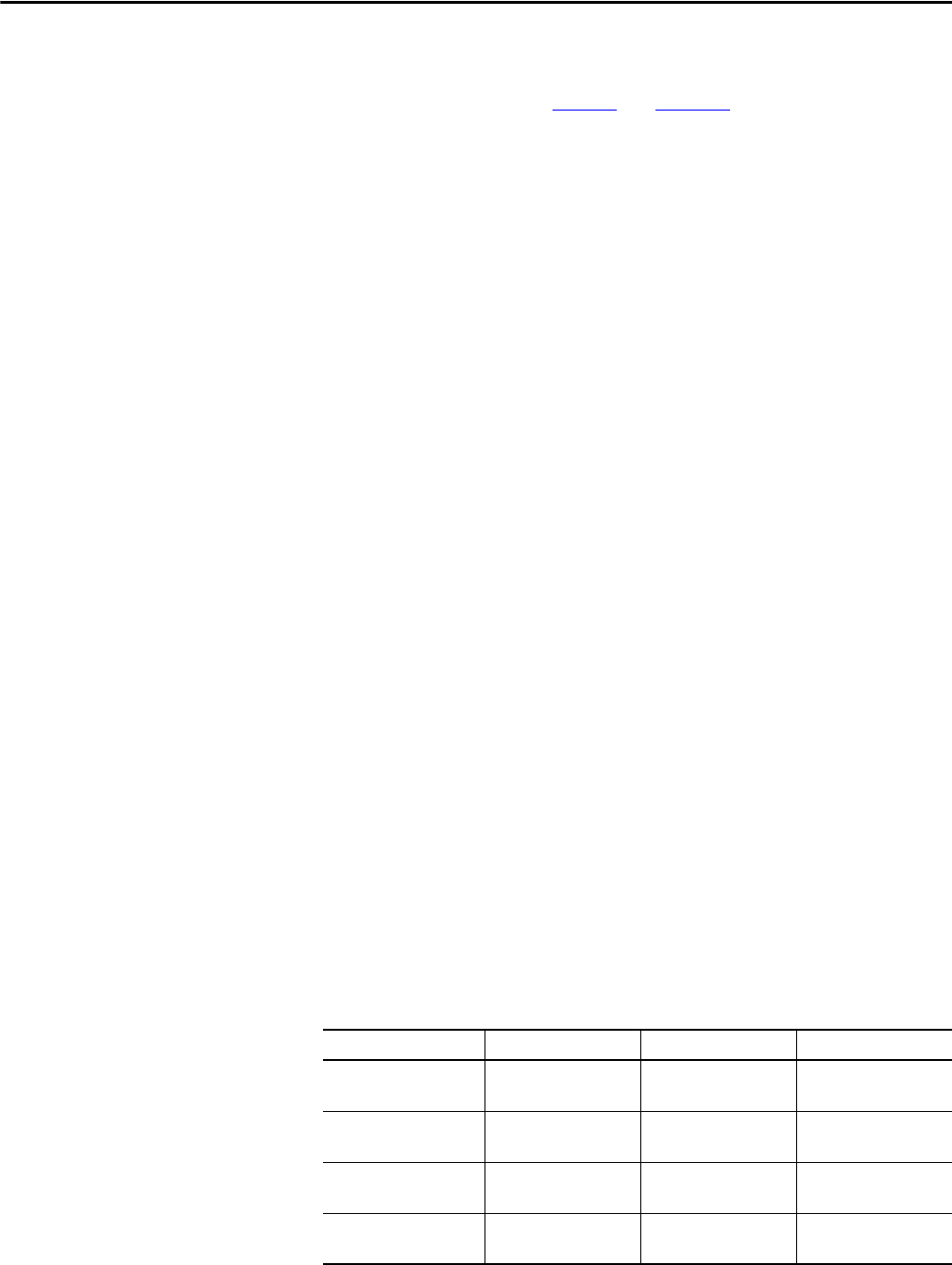Owner's manual
Table Of Contents
- Front Cover
- Important User Information
- Summary of Changes
- Table of Contents
- Introduction
- About the Drive
- Identifying the Drive by Cabinet Assembly ID Number
- LiquiFlo 2.0 Drive Component Locations
- Identifying the Power Module by Model Number
- AC Line I/O Board Description (Frame 3 Only)
- Standard I/O Board Description (Frame 3 Only)
- Combined I/O Board Description (Frame 4 Only)
- DPI Communication Ports
- Optional Equipment
- Planning the Installation
- Mounting The Power Module and Grounding the Drive
- Installing Input and Output Power Wiring
- Completing the Installation
- Using the Start-up Routines
- Programming Basics
- Parameter Descriptions
- Troubleshooting the Drive
- Verify that the DC Bus Capacitors are Discharged Before Servicing the Drive
- Determining Drive Status Using the Status LEDs
- About Alarms
- About Faults
- Diagnostic Parameters
- Common Symptoms and Corrective Actions
- Replacement Parts
- Board Replacement, Firmware Setup Procedures
- Troubleshooting the Drive Using the OIM
- Checking the Power Modules with Input Power Off
- Technical Specifications
- Using the OIM
- Installing and Removing the OIM
- Display Description
- OIM Menu Structure
- Powering Up and Adjusting the OIM
- Selecting a Device in the System
- Using the OIM to Program the Drive
- Monitoring the Drive Using the Process Display Screen on the OIM
- Displaying and Changing the OIM Reference
- Customizing the Process Display Screen
- Customizing the Function Keys
- Controlling the Drive From the OIM
- LiquiFlo 2.0 Drive Frame 3 Wiring Diagrams
- LiquiFlo 2.0 Drive Frame 4 Wiring Diagrams
- Index
- Back Cover

Rockwell Automation Publication D2-3518-3 - May 2013 27
Chapter 2
Standard I/O Board
Description (Frame 3 Only)
The Standard I/O board is offered as an option for Frame 3 LiquiFlo 2.0 drives.
The following signals are available at the Standard I/O board. The Standard I/O
board is labeled as item 24 in Figure 4
. See Figure 10 for terminal identification.
Digital Inputs
The Standard I/O board terminal block provides terminals (27...32) for six
user-configurable digital inputs. These inputs can be configured using the
inverter digital input selection parameters (361...366).
Digital Outputs
The Standard I/O board terminal block provides terminals for two
user-configurable digital outputs (terminals 11...16). These logic outputs can be
configured for any of the 30 functions controlled by Digital Out1 Sel (380) and
Digital Out2 Sel (384).
The digital output devices are form C relays capable of switching 250V AC at 8 A
or 30V DC at 8 A.
Analog Inputs
The standard I/O board terminal block provides two user-configurable terminals
for analog inputs (terminals 1...4 and 17...20). Configure the inputs using inverter
parameters Anlg In Config through Analog In 2 Loss (320...327). Each analog
input has two modes: voltage-sensing (input senses -10 V...10 V) and current-
sensing (input senses 0 mA...20 mA). Separate terminals on the standard I/O
board are used for each mode.
The mode for both inputs are selected via inverter parameter Anlg In Config
(320). If the bit corresponding to a particular analog input is set to 1, then the
analog input is in current-sensing mode; if set to 0 it is in voltage-sensing mode.
The following table describes the correspondence between the mode of each
user-configurable analog input and the standardI/O board terminals that should
be used.
Input and Mode Paramter 320 Setting Terminal Designators Terminal Numbers
Analog input 1,
voltage-sensing
Bit 0 = 0 V1+, V1- 1, 2
Analog input 1,
current-sensing
Bit 0 = 1 I1+, I2- 17, 18
Analog input 2,
voltage-sensing
Bit 1 = 0 V2+, V2- 3, 4
Analog input 2,
current-sensing
Bit 1 = 1 I1+, l2- 19, 20










